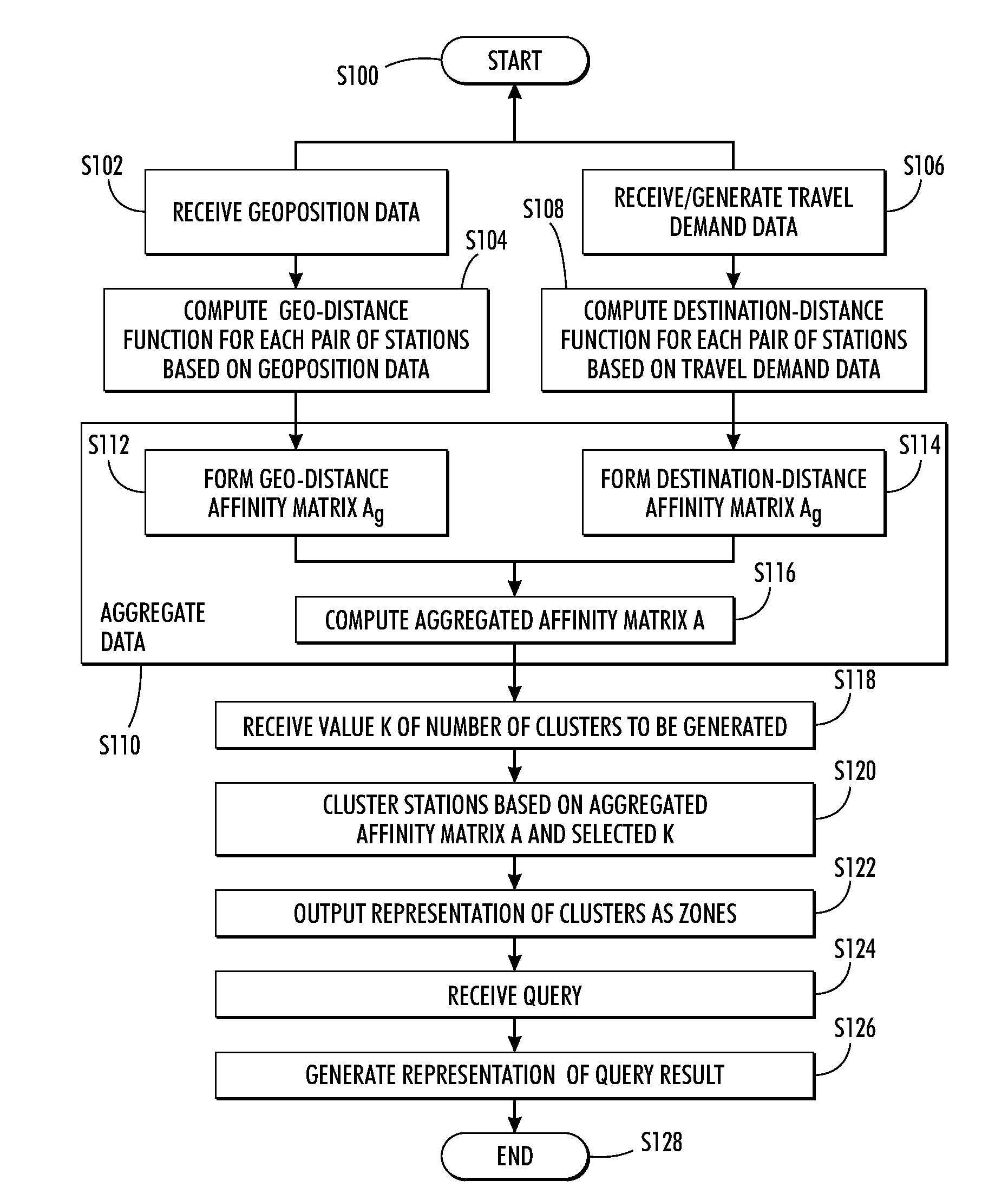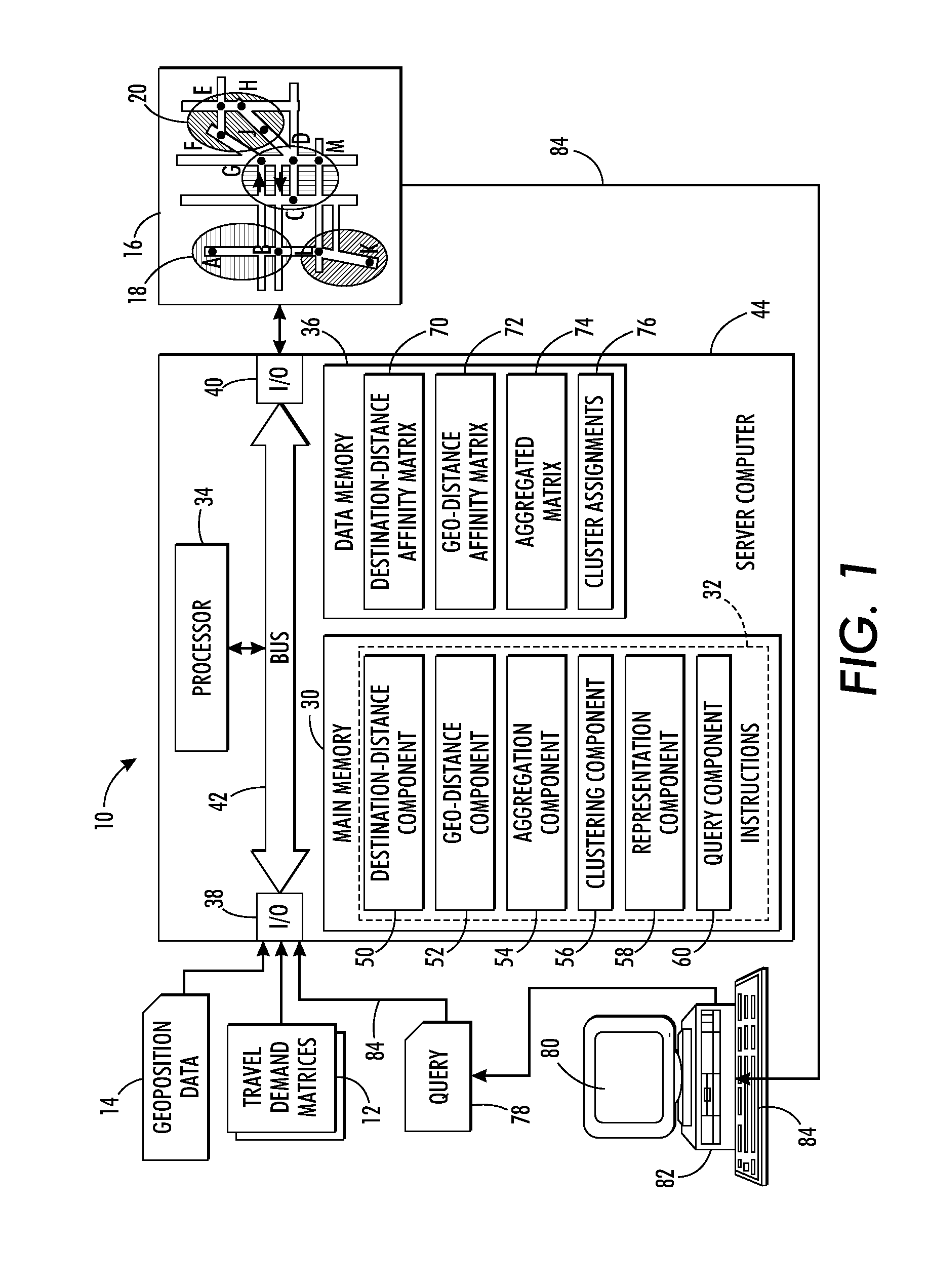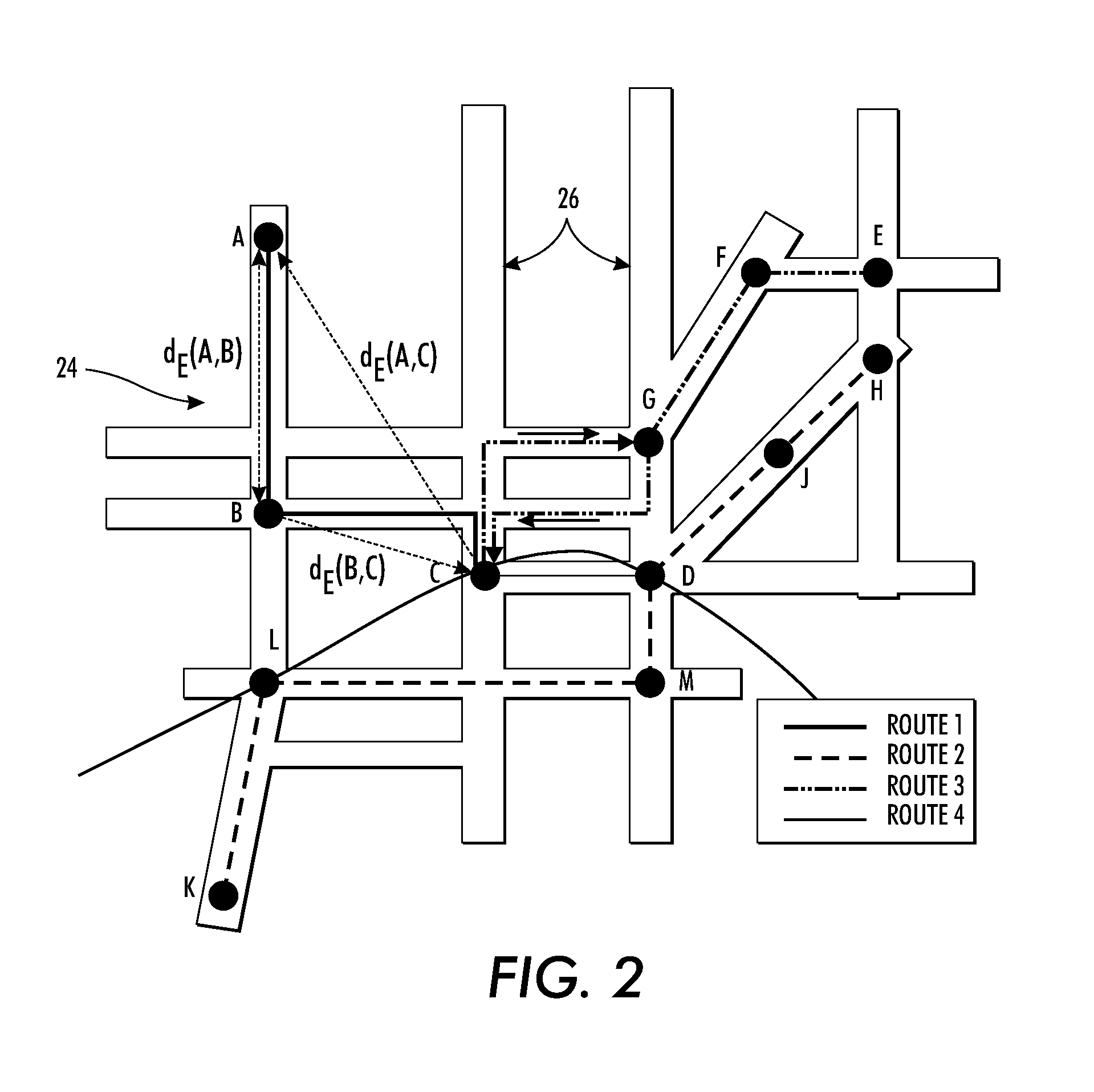Dynamic city zoning for understanding passenger travel demand
a dynamic city and demand technology, applied in the field of transportation arts, data analysis, tracking arts, etc., can solve the problems of confusing aggregation of od matrices by fixed administrative zones, difficult visualization of clustering based on traffic matrix, and inability to understand automatic collection travel data
- Summary
- Abstract
- Description
- Claims
- Application Information
AI Technical Summary
Benefits of technology
Problems solved by technology
Method used
Image
Examples
example 1
[0130]FIG. 6 illustrates the travel demand based on the OD matrices for two close stops in the Nancy transportation network. Their most significant destination demands in the city are shown by the dashed and solid lines, respectively. The close location of these two stations, combined with the highly similar destination demands, would favor placing these two stops in the same zone. In FIG. 7, the two stations illustrated are geographically close but have very different destination demands, making it much less likely they will be assigned to the same zone.
[0131]Some of the results of the dynamic zoning method discussed above are visualized for OD data in FIGS. 8-11. In all tests, the Euclidean distance function was used as the geo-distance function and σ=σ1=1. Two-view spectral clustering of the n points was performed. FIGS. 8-11 shows the dynamic zone solutions by multi-view spectral clustering, where the number of zones is 5, 10, 20, and 30, respectively.
example 2
[0132]In another example, a determination of how sensitive the zoning is to small changes in the travel demand. In this test, Algorithm 1 was run ten times, each time altering the travel demand with a 3% random noise. A Delaunay triangulation of the network was performed and all triangulation facets plotted with a color indicating the sensitivity to the noise. A triangle is in red if all three support points share the same zone in all runs. Inversely, light blue color indicates a transition place where support points belong to different zones. In FIG. 12, these are indicated with different shading rather than color, with Level 1 (red) being the lowest sensitivity and Level 6 (light blue) being the highest sensitivity to noise.
example 3
[0133]Zone querying is illustrated in FIG. 13. While different shadings are again shown for ease of illustration, these would be displayed as different colors. In this example, one of zones is queried for travel demand toward other zones. FIG. 13 shows an example of such querying for the case of four of the 10 zones (k=10) in the Nancy city plot shown in FIG. 9. In any of presented plots, a query zone is shown with a predetermined color and, for all other zones, destination estimations are aggregated by zones and presented with different colors, where red may be used to indicate high demand and blue color to indicate a low demand. A user can click on one of the zones to have the appropriate one of the maps displayed.
PUM
 Login to View More
Login to View More Abstract
Description
Claims
Application Information
 Login to View More
Login to View More - R&D
- Intellectual Property
- Life Sciences
- Materials
- Tech Scout
- Unparalleled Data Quality
- Higher Quality Content
- 60% Fewer Hallucinations
Browse by: Latest US Patents, China's latest patents, Technical Efficacy Thesaurus, Application Domain, Technology Topic, Popular Technical Reports.
© 2025 PatSnap. All rights reserved.Legal|Privacy policy|Modern Slavery Act Transparency Statement|Sitemap|About US| Contact US: help@patsnap.com



